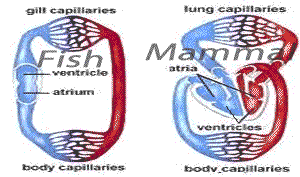The heart of a fish has two chambers, an atrium and a ventricle. Deoxygenated blood arrives from the body, enters the atrium and then the ventricle where it is pumped to the body via the gills.
Blood is pumped from the heart through the capillary beds of the gills and through the capillary beds of the tissues. Blood slows down when it enters the capillary beds of the gills. It is moving slowly on its way to the tissues and needs skeletal muscular action to assist blood to move back to the heart. So the fish relies on physical movement for blood to be recirculated back to the heart.
If land based mammals were to rely on this method to return blood to the heart they would die from exhaustion. Water supports the mass of the fish but on land where there is no buoyant force gravity would take its toll on the animal.
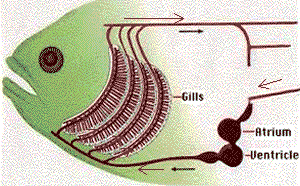
Insects are arthropods and like all arthropods have an open circulatory system. That is, blood is not housed in blood vessels as it travels around the body. In an open system, a blood like fluid, called the hemolymph, flows freely within body cavities where it makes direct contact with all internal tissues and organs.
The heart of an insect is a blood vessel called the dorsal vessel. This dorsal vessel is divided into chambers that are separated by valves to ensure hemolymph flows in one direction. Muscles attached to the walls of each chamber undergo peristaltic contractions and force blood to flow forwards from chamber to chamber.
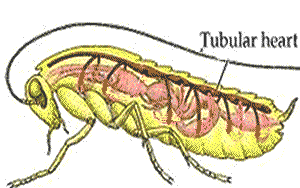
The heart of an amphibian, such as a frog, has three chambers, one ventricle and two atria. Blood from the ventricle travels to the lungs and skin where it is oxygenated and also to the body. In the ventricle deoxygenated and oxygenated blood are mixed before being pumped out of the heart. This is a very inefficient method when compared to the mammalian heart.
Amphibians, however, have lower metabolisms hence they require less oxygen. Requiring less oxygen puts less demands on the heart to deliver blood of high oxygen concentration. So a heart with three chambers is ideal for the needs of amphibians who could also absorb oxygen through their skin when moist. Mammals and birds, however, have a higher metabolic rate so must have a way of delivering more oxygen per litre of blood to the body than amphibians.
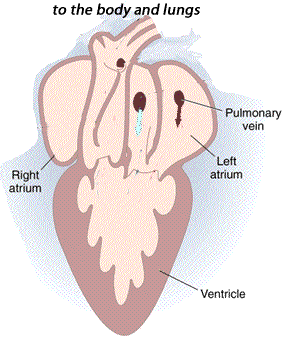
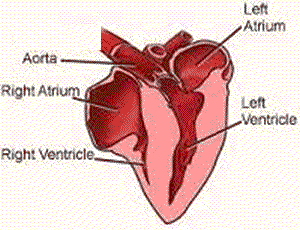
3) What is the disadvantage of the fish circulatory system as opposed to that of a mammal?
